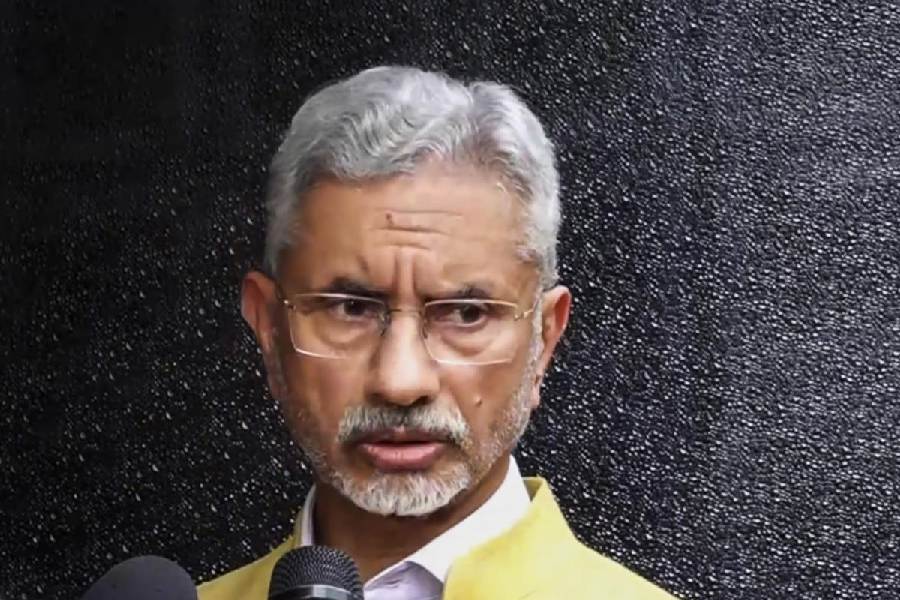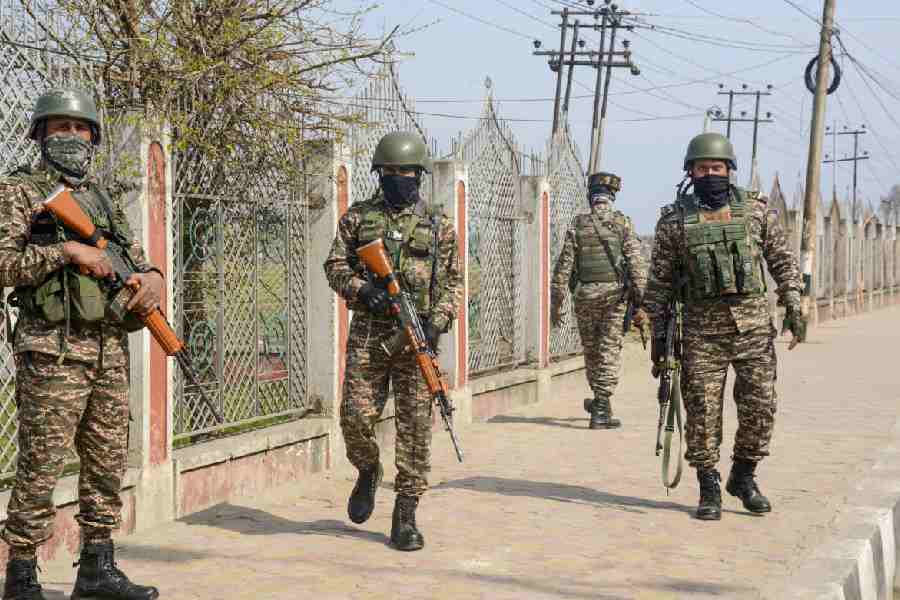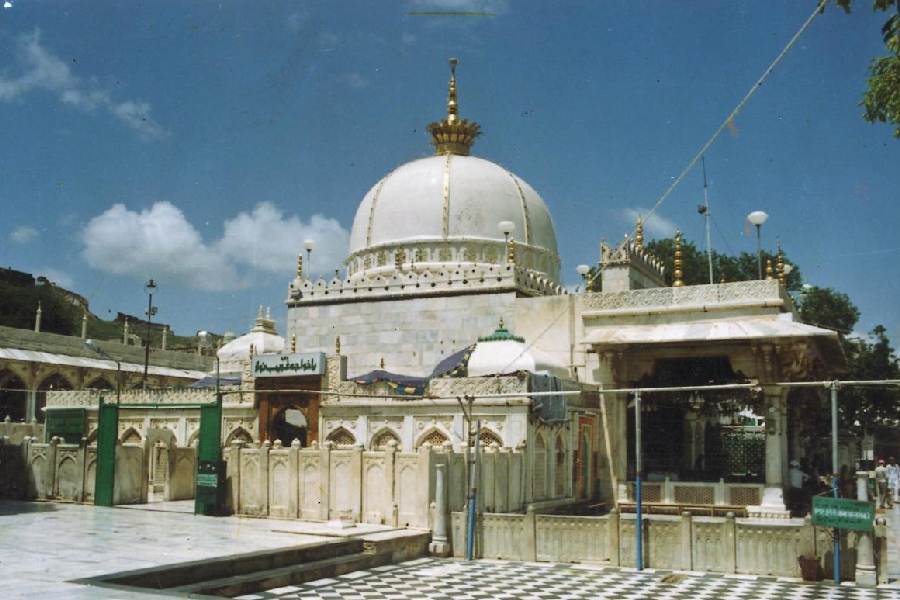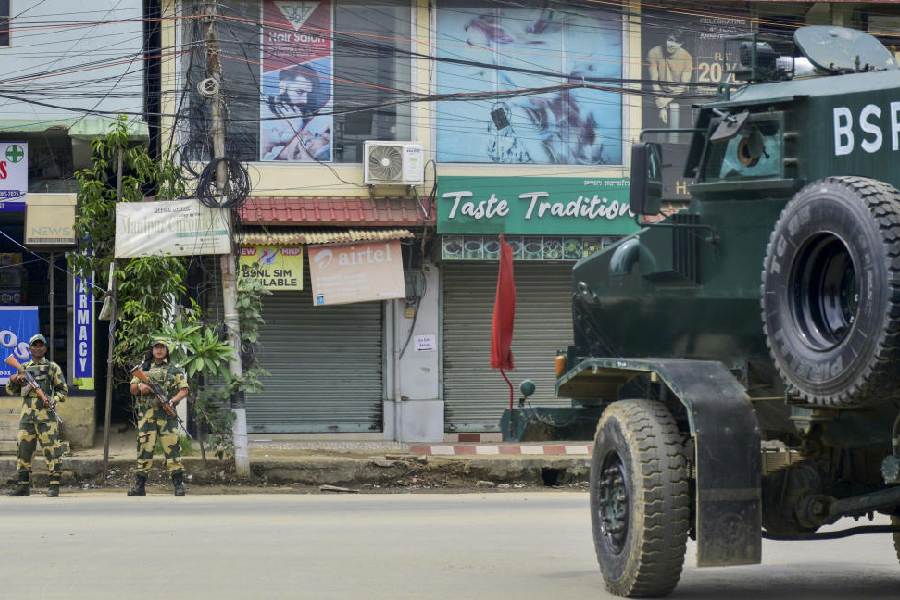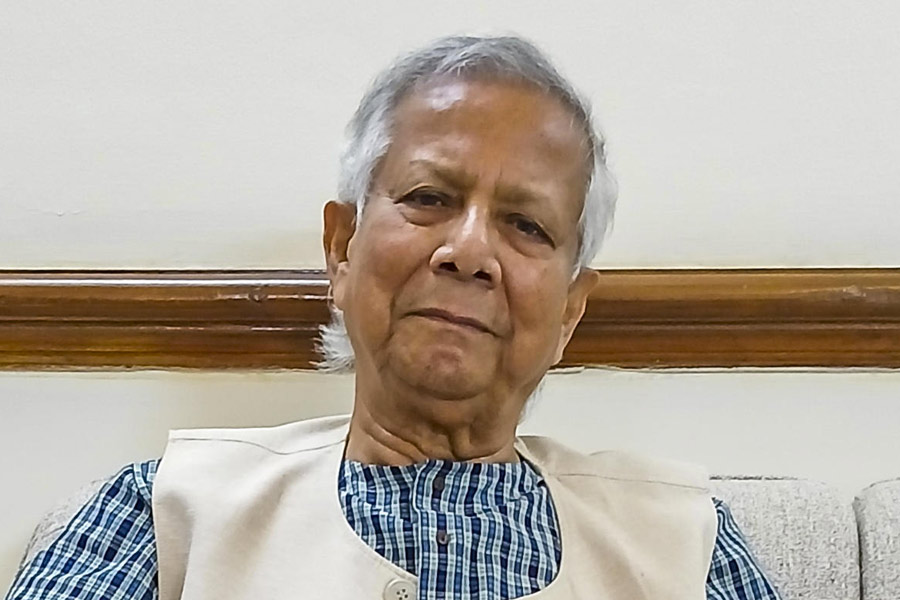 |
| No. 8 Short Street. Picture by Sujoy Das |
Imagine living in a house that has remained almost unchanged for a little over a century while all the other houses in the neighbourhood have been swept aside to meet the insatiable demand for concrete-and-glass office and living space.
In place of Sir Nilratan Sircar’s sprawling but crumbling house across Short Street has come up an unoccupied glass ziggurat. It used to belong to Dr Brahmachari of kala azar cure fame, but the man after whom the Sealdah station hospital was named used to live there for a long time.
Short Street was a Jewish enclave but Bengalis lived there too. The adjacent house belonged to the Bhagyakul Roys but the family of A.D. Khan, once municipal commissioner, lived there. Another neighbour was Dr S.C. Bose, brother of Netaji Subhas Chandra Bose, and the old plaque that declared that he occupied the lower flat has not been removed from the gateway of this apartment block.
Most of the Sen family building has been made over, and the only part that remains intact looks quaint, hemmed in by a new breed of buildings that have neither grace nor hold the promise of comfortable living even in a neighbourhood that is still considered upscale.
No. 8 Short Street has been declared a heritage building, and justifiably so. The property belonged to Elias Silas Ezra & Rahamim Moses Cohen and Dwarka Nath Ray bought it from him in April 1907 and constructed the building thereafter. So one can estimate the age of this building.
It is an elegant double-storeyed building, well maintained and painted light cream, and fronted by a lawn and a garden with an abundance of trees that serve as a screen from the outside world and the sun as well. It gives the impression of a leisurely way of life that would find it difficult to survive amid today’s tooth-and-nail competitiveness.
The parapet is crenallated like a coxcomb so that from a distance the house looks like it is wearing a crown. The spiral staircase leading to the terrace has collapsed. True arches once vaulted across the south and north-facing verandah walls under the parapet. Wooden slats filled in the space under the arches. At some point of time in the 1960s, these arches were filled up. Artist Paula Sengupta, who is married into the family, says she discovered these when the plaster was recently removed from the brickwork for damp-proofing. The verandah with comfortable armchairs enjoys a breeze even on the hottest of evenings.
The annexe building is connected to the main house by the bridge upstairs and side-staircases downstairs. This much smaller building, part of which serves as the outhouse, has a terrace with a scalloped parapet. A chimney sticks out from the terrace — the annexe once housed the kitchen.
The first floor has three bedrooms, a dining room, a living room and Paula’s studio that used to be a north-facing morning room/sun room ventilated on all four sides with louvered doors. It is built over the back porch of the house that now serves as the entrance.
Paula’s husband, Sujoy Das, shows me around the house in which he, like his mother, has grown up. The house has a verandah encircling it. One corner of it overlooks the garden of the Bhagyakul garden. With tessellated floors it was constructed on the lines of bungalows for Europeans.
Sitting in the verandah and enjoying the evening breeze, Sujoy’s mother, Reena Das, says her grandfather, Dwarka Nath Ray, was a reputable homoeopath. He was originally from Shubhadda village, now in Bangladesh. In Calcutta, initially he used to live at 67 Beadon Street, and thereafter moved to the Short Street address, worlds and cultures apart from conservative north Calcutta.
Gradually they adapted a more Westernised way of life, and this can be guessed from the architectural style of the house itself. In 1893, he founded King & Co, from where homoeopathic medicines are dispensed. It has branches in Royd Street, MG Road, Bhowanipore, Behala and Howrah.
Dr. DN Ray took diksha and converted to Brahmoism. So the Rays have been Brahmos for four generations. Dwarka Nath Ray was survived by two sons, Ranajit Ray and Amiya Nath Ray, and one daughter, Malati Bose. Ranajit Ray went to England and returned to start Ray & Ray, one of the first accounting firms to be opened by Bengalis.
“At one time the families of the two brothers lived together in this building and then it was full of life. All the cousins lived here. Our tailor used to live in the outhouse. The stairs were steep, so we were not allowed to run up and down. The stables used to be somewhere there. Eminent Bengalis like B.C. Roy, Sarojini Naidu and Jagadis Chandra Bose were regular visitors. We kept open house. Later, my uncle’s family (Ranajit Ray) moved to Merlin Park,” says Reena Das.
She pointed out one peculiarity about the verandah — ink bottles had been used instead of balustrades. Her son has planted jacaranda and laburnum trees to keep to ugly sights like the new buildings at bay.
The red brick wall, that is a dead giveaway of the age of the building, is covered with ivy.


